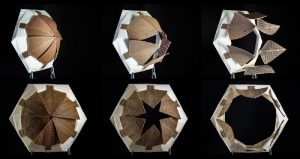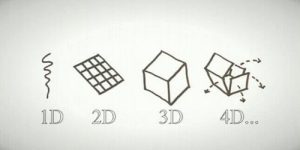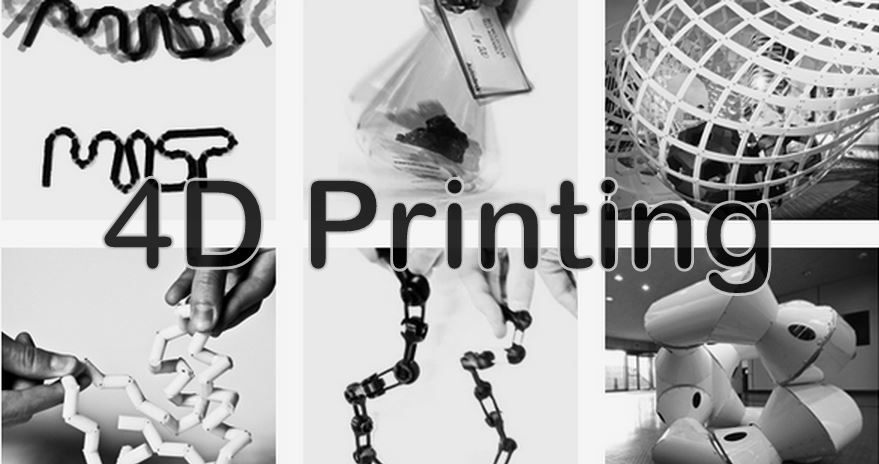What is 4D (four-dimensional printing)?
In this article, we will see how the emerging technology of 4D printers works? To learn more about this amazing technology, read this guide.
There is always something new and popular in the wild and amazing world of technology. Nowadays, 4D Printing is becoming a hot topic. This article tries to get an overview of 4D Printing, its technology, applications, and concepts.
What is 4D (four-dimensional Printing)?
3D Printing is a rapid prototyping and manufacturing technology that stores materials layer by layer to create 3D objects. 3D Printing, also known as “additive production,” transforms digital maps into physical objects by creating them layer by layer. 4D Printing is based on the same technology, with one big difference: it uses special materials and intricate designs that are “programmed” to force your 3D Printing to deform. 3D Printing uses techniques similar to 3D Printing to create parts. The main difference is that 4D printed objects change their shape over time after Printing, while the 3D printed object retains the same fixed shape.
So, 4D Printing is a 3D printing modernization that uses special materials to print objects, which change shape after production. The stimulus (deformation) may be water, heat, wind, and other forms of energy. 4D Printing allows 3D printed objects to change their shape over time. The term “4D printing” refers to this fourth additional dimension: time.
This emerging technology combines 3D printing techniques with high science, engineering, and software materials. Materials play an important role in 4D Printing because the technology uses materials specifically designed to respond to a specific stimulus. Common stimuli that can cause deformed objects to include changes in temperature, light, water, magnetic fields, and chemical and other environmental factors.
Who Invented 4D Printing?
You can not attribute the creation of 4D Printing exactly to an inventor. Many industry leaders and research facilities now develop 4D Printing. As of 2017, the most important 3D printing companies/research laboratories are MIT Self-Assembly Lab, Stratasys 3D printing maker, and Autodesk 3D software company.
However, Australian and Singaporean researchers are growing rapidly in this regard. Their partnership expands the range of materials suitable for 4D Printing and helps bring technology closer to the market.
Where can you buy a 4D printer?

This technology is still in the research and development stage. In some laboratories or prototyping facilities, 4D Printing is currently used. You may also see this technology as part of art installations and architectural exhibitions.
But as a consumer, you can not just go to a store and buy a “4D printer” or get a “4D printing” license. One day you will likely cross paths that have 4D Printing in your daily life without even realizing it. These 4D prints will be either medical implants or mechanical systems that change as environmental conditions change.
How does 4D printing work?

To understand 4D Printing, you first need to understand how the material reacts to a particular stimulus. Using this knowledge of material behavior, engineers can design an object with changes in its material structure.
A model is then printed in 3D based on CAD digital design, either individually or on a composite material.
Using this approach, engineers can create components with predetermined shapes or fold and open in certain ways when stimulated by a specific stimulus.
Imagine you have a box printed with a 3D printer. This is fine on its own, but imagine if the box could automatically expand to be packed when exposed to certain stimuli. It seems almost childish when we consider only the effect of a box from three-dimensional to two-dimensional (by smoothing itself). Still, such simple things can have an enormous effect in the business world.
4D Printing uses techniques similar to 3D Printing to create parts. The main difference is that 4D printed objects change their shape over time after Printing, while the 3D printed object retains the same fixed shape.
In 4D Printing, you need stimulus mechanisms.
During the 4D printing process, a geometric code is added that contains “instructions” on how to move or deform after stimulus stimulation. This stage of pre-planning allows the creation of intelligent and responsive objects that can adapt to specific environmental factors. After the printing process is completed, this geometric code is pre-programmed to determine how different body areas should react to a particular stimulus.
In 4D Printing, you need stimuli to start the change. These can include water, heat, light, or electricity. There are other forms of stimuli, some of which need to be explored in depth through research.
For some 4D printing processes, you need special materials to react to these stimuli. This allows objects to be programmable and execute their “genetic code” 3D printing whenever you want.
Other research laboratories focus on “planning” the desired shape of the object in the microstructure of standard materials. This approach uses the capabilities discovered in microscopic structures. When these are properly configured, they show the desired deformation of the macrostructure. The advantage is that 4D printed objects can use existing printers and materials.
4D printing companies
Imagine buying a shoe that can adjust to your foot or creating a medical device fully adapted to the patient’s anatomy if stimulated by a particular stimulus. These are just some of the potential uses of 4D Printing – an exciting and growing field of research.
While 3D Printing looks like something out of a science fiction novel, Gartner predicts that $ 300 million will be invested in 3D Printing by 2023, although the technology is still far from commercial access. Has it.
At MIT’s Self-Assembly Lab, Skylar Tibbits, Assistant Professor, is currently working on 4D Printing to take it to the next level. As he said in his TED talk, he has always been fascinated by 3D printing capabilities. But he wanted to know how one could deform an object accurately (that is, what 4D Printing allows).
In 2014, MIT approved funding for Tibbits to open a new self-assembly lab. Since then, Tibbits has been working with Autodesk to create a computer system that allows geometric inputs to measure how 3D-printed objects can change after Printing. He also publishes a quarterly journal on 3D Printing and additive production, offering scientific insights on many 3D printing topics.
4D Printing: What is next?
There are several 3D printing technologies appropriate for processing programmable or “smart” fabrics:
- Stereolithography (SLA)
- Making Fused Filament Fabrication (FFF)
- Material Jetting
- Selective Laser Melting (SLM)
While the first three typically work with polymer-based materials, the most common SLM materials are metals.
Significantly, recent advances in 4D Printing can be largely attributed to advances in Material Jetting technology that make multi-material Printing possible. This technology works by dropping material droplets and allowing its settling to be tightly controlled.
As we have seen, this technology uses specially designed “smart” materials that have one or more properties that external stimuli can alter.
As mentioned above, 4D Printing becomes a science in adolescence. However, several focus groups of scientists worldwide believe that the use of (four-dimensional printing) may become a reality and become one of the fastest-growing technologies in the near or medium term.
Many examples show how far this technology has come. Think simple folding objects, programmable deformation materials, and hydrogel composites. Years of research and experimentation will eventually lead to amazing inventions such as adaptive medical implants, self-assembled buildings, and even soft 3D printing robots.
Conclusion
It takes several years, or even a decade or more, to see the original 4D printing programs. With this in mind, it seems that this technology is following the evolution of 3D Printing to become the next line-breaking technology in production.
The myriad uses of (four-dimensional printing) printing technology are awesome. So rest assured that in the coming years you will be looking forward to this new and exciting industry as new developments improve our lives in tomorrow’s amazing world.
Source:https://rasekhoon.net/article/show/1593075/%DA%86%D8%A7%D9%BE-%DA%86%D9%87%D8%A7%D8%B1-%D8%A8%D8%B9%D8%AF%DB%8C-%DA%86%DB%8C%D8%B3%D8%AA

